Cell Sourcing and Cell Culture - Lecture 5
1/114
There's no tags or description
Looks like no tags are added yet.
Name | Mastery | Learn | Test | Matching | Spaced |
|---|
No study sessions yet.
115 Terms
3 cell sources:
allo (inter-species), auto (self), xeno (animals)
3 cell types to consider for sourcing:
stem, primary, cell lines
Combinations of choices for cell source consideration:
Isolate cell & transplant
Isolate cell, increase # & transplant
Isolate stem cell, increase #, make it into the cell you want & transplant
Answer “okay”
okay
Name the process by which a simple initial structure becomes complex. (Example: successive differentiation of an unstructured egg)
epigenesis
zygote
single hybrid cell, fertilized ovum

a cluster of dividing cells made by a fertilized egg
blastocyst
new cells formed during early cell division (cleavage) — contained by blastocyst
blastomeres
In embryonic development:
“cell-cell interactions create polarization of the cell and organization — functional distinctions begin to exist between cells (16-32) cells”
What are the 2 distinct cell populations at this time?
trophoblasts and inner cell mass
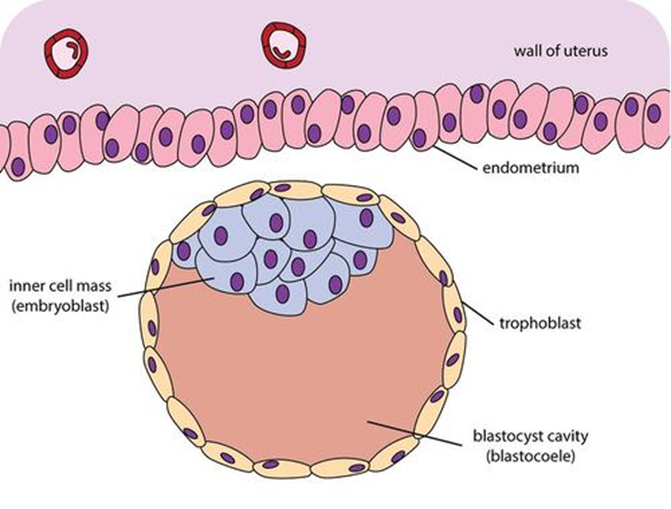
in embryonic development, a thin layer of cells that helps a developing embryo attach to the wall of the uterus, protects the embryo, and forms a part of the placenta. Also provides nutrients to the embryo.
trophoblasts
in embryonic development, the population of cells that becomes the developing fetus
inner cell mass

in the development of germ layers, the process of establishing the 3 definitive germ cell layers of the embryo
gastrulation
what are the three definitive germ cell layers of the embryo?
ectoderm, mesoderm, endoderm
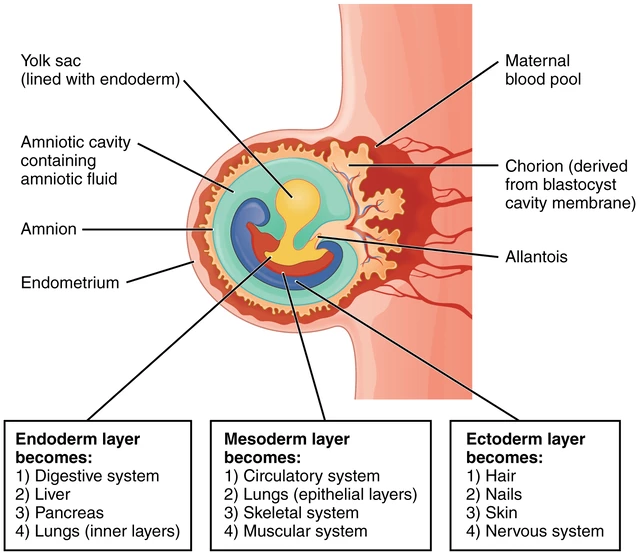
a germ cell layer of the embryo that becomes the neural crest, neural tubes, lens, cornea, and skin. The outermost layer.
ectoderm
a germ cell layer of the embryo that becomes the connective tissues, muscles, and circulatory system.
mesoderm
a germ cell layer of the embryo that becomes the respiratory system, gut, and endocrine system(?)
endoderm
the process by which stem cells divide to make more stem cells, perpetuating the stem cell pool.
self-renewal
3 stages of stem cell differentiation:
stem cell — progenitor/precursor cell (somatic cell) — specialized/mature cell (terminally differntiated)
Potentiality of stem cells:
totipotent, pluripotent, or multipotent
potentiality classification: able to give rise to all embryonic and adult lineages
totipotent
potentiality classification: able to give rise to all cell types in an adult
pluripotent
potentiality classification: able to give rise to multiple cells within a lineage
multipotent
self-renewal of stem cells:
unlimited
3 reasons we care about stem cells:
_____-_______ — unlimited source
________ — pluripotent (or at least multipotent)
Many lack ________ _____ (Class 1 and Class 2 MHC) and/or have low expression of co-stimulatory markers — possibly less __________.
(MHC class I proteins are found on the surface of almost of all nucleated cells in the body. MHC class II proteins are primarily expressed on antigen-presenting cells, including dendritic cells, macrophages, and B cells)
self-renewal, potential, immunogenic markers, immunogenic
3 sources of stem cells
(in between: neonatal, fetal, iPSC)
embryonic, adult, mesenchymal
cells that develop into connective tissue, blood vessels, and lymphatic tissue
mesenchymal stem cells
Example: Myocardial Infarction Clinical Trials
Transplantation of cells to fix damaged heart tissue
“While Phase 1 early trials were promising, high heterogeneity of outcomes were seen for Phase 2 trials (or multi-center) (further high heterogeneity of animal studies)”
What are some potential reasons for this variation?
Delivery of cells (IV to direct injections), “matching” of cells, source of cells, age of cells
Example: Myocardial Infarction Clinical Trials:
“The exact mechanisms of cardiac repair by transplanted are merely unknown. Two main hypotheses exist:”
Direct cardiomyogenic/vasculogenic ____________
Indirect stimulation of the reparative response through ______ _______.
To test, trace implanted cells — no localization of cells (~1-3% remain/graft), whether injected IV, within the coronary artery, or within the heart tissue itself!
Transplanting dead cells produces the same effect as live cells!
differentiation, paracrine effects
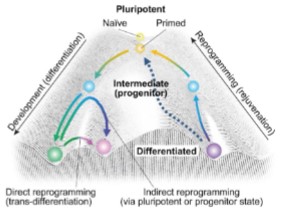
________ _______ _______ (_____) cells are generated via genetic reprogramming of adult somatic cells that have limited differentiation potential but, upon reprogramming, express genes that enable them to regain plasticity and give rise to all cell types.
induced pluripotent stem (iPS)
How many different types of mature cells exist in the human body?1
over 200

Connected 2D sheets of cells
Cuboidal morphology
Polar — basal & superior
epithelial cells
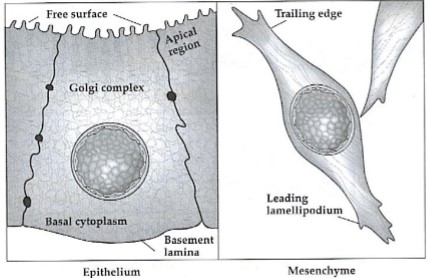
Alone or loosely connected cells
Bipolar or spindle morphology
Migrate individually
Can differentiate into specialized mesenchymal cells (AIC)
Functions of epithelial cells
covering/protection (e.g. skin), absorption (e.g. gut), secretion (e.g. glands)
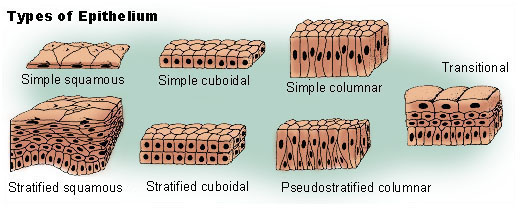
Structure of epithelial cells
Single cell layer
Simple squamous (flattened)
Simple cuboidal (square-shaped)
Simple columnar (taller than wide)
Multiple cell layers
Stratified squamous (flattened)
Stratified cuboidal (square-shaped)
Pseudo stratified columnar (taller than wide)
Answer: “okay”
okay
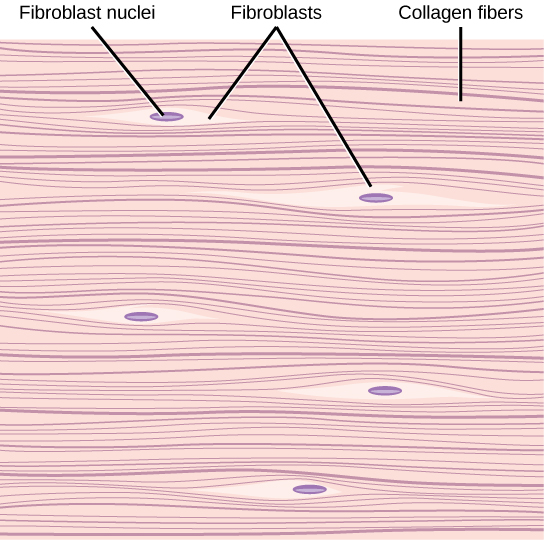
Name the type of tissue:
Structure:
Comprised of cells and ECM (amorphous like hyaluronan and fibrous like type I collagen) in different arrangements and compositions)
Function
Support (e.g. bones)
Connections (e.g. tendons & ligaments)
Protection (e.g. fat pads)
Storage of fluid (e.g. blood, fat)
connective tissue
Name the type of tissue:
Function:
Specialized proteins, actin and myosin, allow for cellular shortening and contraction of tissue.
muscle tissue
What are the 3 types of muscle tissue?
skeletal, cardiac, and smooth muscle
Name the type of muscle tissue:
Attached to bones (induces movement)
Long multinucleated cells or myofibers; appears striated
skeletal muscle
Name the type of muscle tissue:
heart (propels blood through circulation)
single nucleated cells, electrically connected, appears striated
cardiac muscle
Name the type of muscle tissue:
blood vessels, skin, internal organs
Squeeze substances through organs
Single nucleated cells, striated
smooth muscle
Which type of muscle is multinucleated?
skeletal
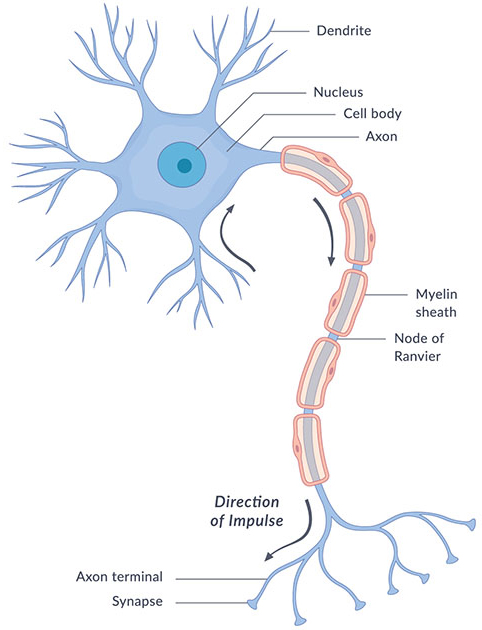
Nervous Tissue
Neurons
Conducting cell; transmits _____ _______
Doesn’t divide (aka _________)
Dendrites
Short and branching processes
Increased surface area to receive signals
Transmit impulses to neuron ____ _______
Axons
Only single process
Some axons surrounded by ______ (aids in conductance)
carry impulses away from cell body
_________ (second cell type)
Nonconductive
Support, nourish, and protect neurons
electrical impulses, amitotic, cell body, myelin, neuroglia
Name the type of tissue:
“polarized epithelial cells that produce proteins from other molecules surrounding these cells”
glandular tissue
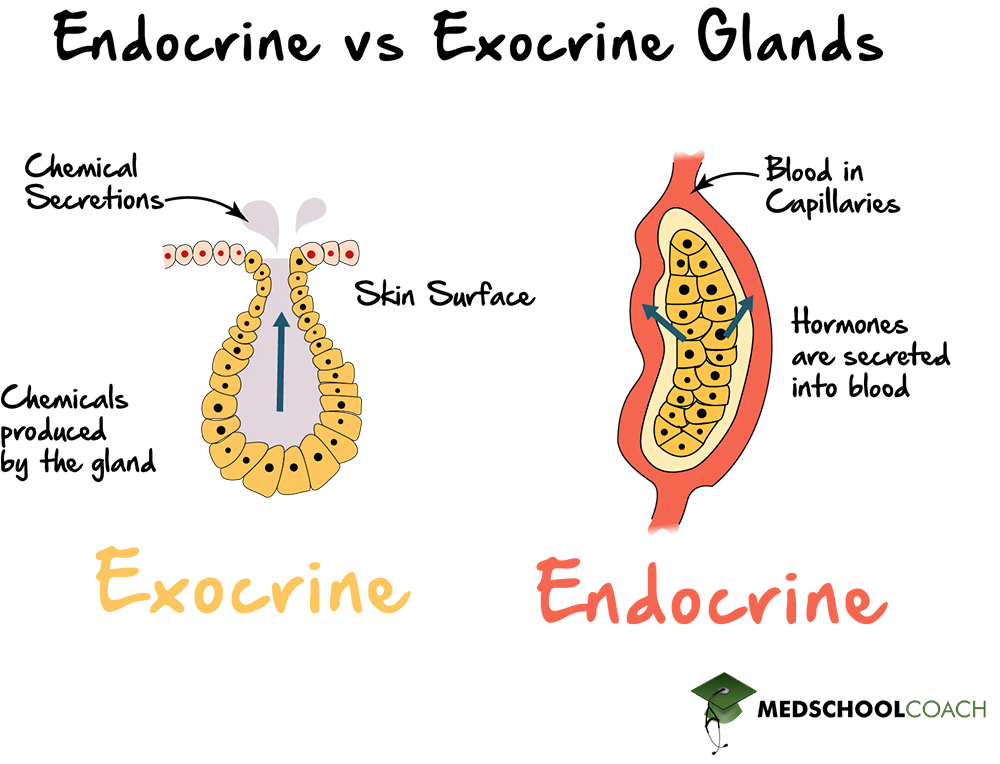
what are 2 types of glands?
exocrine, endocrine
What type of gland is this?
“secrete products into body cavities or onto body surfaces via ducts”
Many kinds of duct structures
Modes of secretion
exocrine glands
what type of gland is this?
“secrete hormones directly into the blood”
endocrine glands
Organs are composed of repeating functional subunits.
Organs in the body are made up of multicellular functional subunits that perform specific organ functions.
Answer: “okay”
okay
culture derived from dispersed cells taken from original tissue, from a primary culture, or from a cell line by enzymatic, mechanical, or chemical disaggregation.
cell culture
Cell culture metholodologies:
Cell _______
_______ of cells outside the body
_______ or expansion in vitro
isolation, maintenance, multiplication
Why would we want to culture cells outside of the body?
Understand how cells behave in controlled environment
Toxicology (study the effects of drugs on cells)
Production of biologics (e.g., monoclonal antibodies, hormones, enzymes, vaccines, etc…)
Answer: “okay”
okay
What is toxicology?
the effect of drugs on cells
what are 3 types of primary culture?
cell culture, primary explants, organ culture
the culture of small pieces of tissue surgically removed from animal tissue or organ. Pieces of tissue are seeded on a substrate to encourage the spreading and outgrowth of the epithelial cells.
primary explants
culture in which the tissue is maintained to preserve its original structural and functional form. The maintenance or growth in vitro of organ primordia or all or part of an organ in a way that may allow differentiation and preservation of the architecture and/or function.
organ culture
Benefits of cell culture:
Can isolate specific, individual cell types
Can control _________ conditions
Free of systemic ________ between animals
Easy to access the cells
Usually ______ quantities can be obtained (isolation or expansion)
Usually (more/less) expensive than animal studies
environmental, variations, large, less
Drawbacks of cell culture
Environment is not the same as in the animal
Monolayer is not 3D; no 3D tissue _______
Complex in vivo signaling environment (present/absent)
architecture, absent
What cell isolation technique is being described?
Dissect piece of tissue of interest (biopsy)
Cut into small pieces
Place pieces on plastic dish & cover with liquid medium
Place cells in physiologic environment (37 C, pH 7.4)
Allow sufficient time for cells to migrate from tissue
explant technique
Benefits of explant technique for cell isolation:
easy, (uncomplicated/complicated)
cells are (harmed/unharmed) by mild process
uncomplicated, unharmed
Drawbacks of explant technique for cell isolation:
Migration takes a (short/long) time
Only _______ cells are obtained
(Low/high) # of cells / mass of biopsy
long, migrating, low
what cell isolation technique is being described?
Method 1
Numerous cell adhesions to ECM require calcium — chelate calcium
Perfuse with a calcium chelator such as EDTA (EDTA is a chemical that binds certain metal ions, such as calcium, magnesium, lead, and iron)
Mechanically disrupt tissue
Method 2
Enzymatic dissociation w/ proteases
Rinse tissue of blood (can inactivate proteases)
Incubate or perfuse w/ enzymes
Allow sufficient time for ECM to break down and free resident cells
chemical disassociation
Benefits & Drawbacks of chemical dissociation: enzymatic dissocation
(fast/slow)
isolate (few/all) cells
______ exposure can damage cells
_________ inconsistent
fast, all, enzyme, proteases
Cell culture maintenance
Vital environmental conditions:
______ pH
____ degrees Celsius
correct ion balance (_______)
______ supply
neutral, 37, isotonicity, oxygen
what 2 soluble factors are involved in sustaining cell metabolism?
tissue culture medium, serum
What does tissue culture medium provide?
nutrients; sugars, amino acids, vitamins, minerals
what does serum provide?
assortment of proteins and hormones normally found in blood
How much serum is usually added to a cell culture?
1-20% by volume of media
what can you substitute for serum?
specific growth factors and hormones
Insoluble factors involved in sustaining cell metabolism:
Insoluble factors = adhesion matrix
Most cells are ________ dependent
What cells to attach to (along w/ soluble factors)
Controls their function
Proteins attach to glass/plastic
Cells attach to _______
anchorage, proteins
Why are cells usually cultured in incubators with a CO2 supply of 5-10% with sodium bicarbonate in the medium?
To buffer the media to pH 7.4
An increase in CO2 in the media leads to a pH (increase/decrease), making it more (basic/acidic).
H2O + CO2 —> H2CO3 —> H+ + HCO3-
decrease, acidic
What are 2 ways O2 delivery is regulated in cell culture?
K, ________ of O2 in media at ____ degrees Celsius
________ of O2 from _____ phase to cell surface
solubility, 37, transport, gas
What drives O2 diffusion?
(according to Fick’s Law)
concentration gradient
what is the relationship between uptake rate and diffusion rate at steady state conditions?
uptake rate = diffusion rate
How is steady state O2 tension at cell surface regulated?
______-phase oxygen ________, Pg
_______ of the media, d
gas, tension, thickness
increasing the number of cells (also referred to as cell expansion or proliferation)
growing cells
what are the three steps in growing cells?
plating or seeding, proliferation, passaging
Growing cells step 1: Plating or seeding
Place solution w/ cells, known as a ________, into culture container
________ forces cells to make contact w/ container surface where they can ________
suspension, gravity, adhere
growing cells step 2: proliferation
Cells start at (low/high) density —> as the cells divide, their density per area increases
Most normal cells (non-cancerous) are _______ inhibited — proliferation stops when area covered
low, contact
growing cells step 3: passaging
Perform when cells cover almost all dish area
Use _________/_________ to release cells
Plate the cells again at a (lower/higher) density (dilution)
Cells can then proliferate again
P0 = primary isolation; P1 - 1st pass; P2 = 2nd pass
Some cells (e.g., neural) do not grow in culture
proteases/enzymes, lower
What is described below?
“the majority of cells can only divide a specific number of times and then they die. This limits how much one can amplify cell number.”
Hayflick limit
What are 3 causes that can transform or immortalize cells?
These cells are unlimited in their growth potential.
They can be obtained from ______ tissue and are referred to as ______ _______.
Since they do not exhibit normal growth behavior, they can be dangerous to employ in tissue engineering.
radiation, chemicals, spontaneous changes, cancer, cell lines
what are 4 parameters involved in tailoring tissue culture environment to mimic in vivo state?
soluble factors, matrix interactions, cell-cell interactions, physical factors
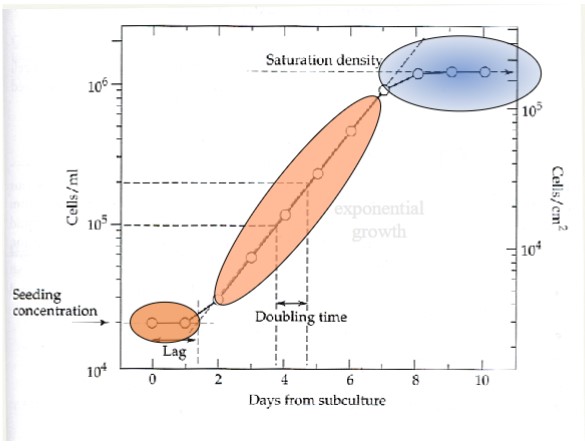
What does a characteristic cell growth curve look like? (no passing)
Answer: “okay”
okay
systemic factors present in the circulation in vivo
soluble factors
What is a strategy to replace soluble factors in a tissue culture environment?
add appropriate _________/______ ________ or ______ to culture ______
hormones/growth factors, serum, medium
what parameter is related to the following problem?
extracellular matrix composition from native tissue required for cell growth/function
matrix interactions
What is a strategy to replace matrix interactions in a tissue culture environment?
use complex ____ materials
ECM
what parameter corresponds to the following problem?
homotypic and heterotypic cell-cell interactions present in the native tissue are lacking.
cell-cell interactions
What is a strategy to replace cell-cell interactions in a tissue culture environment?
use appropriate _____ _______, _______ with other cells
seeding density, coculture
what parameter corresponds to the following problem?
ECM geometry from native tissue differs from that in vitro, cells in vivo are subjected to physical forces
physical factors
What is a strategy to replace physical factors interactions in a tissue culture environment?
seed cells in ____ structures, subject cultured cells to ______ ______ (e.g. fluid shear stress and mechanical stretch)
3D, physical forces

what are the 3 stages of growth for primary culture/cell line (non-transformed)?
Slow growth for primary culture
_______ growth stage (linear on log scale)
Growth stops (_______ limit) —> senescence & cell death
logarithmic, Hayflick
the process by which a cell ages and permanently stops dividing but does not die
senescence
Autologous Cell Source:
From _______
Immune Response: _____/_______
Supply: varies from patient to patient and cell type
Time until available for use: ____-_______
Cost: (low/moderate/high)
Potential function: match
patient, low/none, days-weeks, high
Allogeneic Cell Source:
From ____ _______
Immune Response: _____ (need __________)
Supply: varies from patient to patient and cell type
Time until available for use: _______ available
Cost: (low/moderate/high)
Potential function: match
same species, some, immunosuppression, immediately, moderate
Xenogeneic Cell Source:
From ______ _______
Immune Response: ______ (need _______)
Supply: good
Time until available for use: _________ available
Cost: (low/moderate/high)
Potential function: ?
different species, strong, immunosuppression, immediately,moderate
3 paths of basic cell decision tree:
grow, chill/quiescent, die
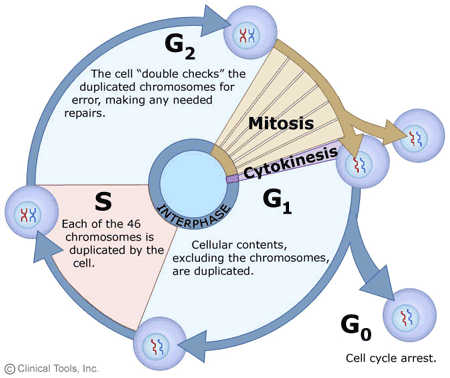
What phase of the cell cycle is this?
gap between mitosis (M phase) and DNA synthesis (S phase)
G1
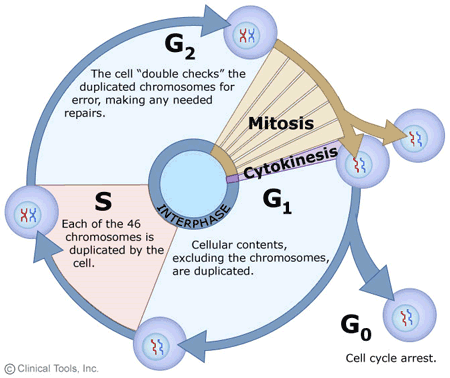
What phase of the cell cycle is this?
DNA replication
S phase
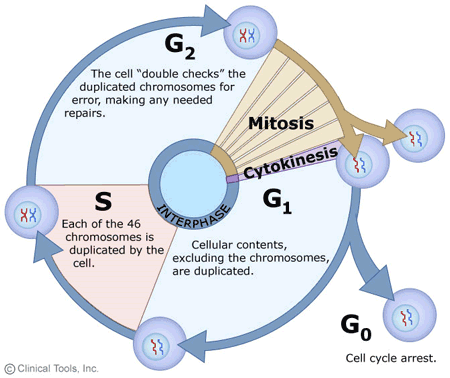
What phase of the cell cycle is this?
cell volume increase prepping for division
G2 Phase